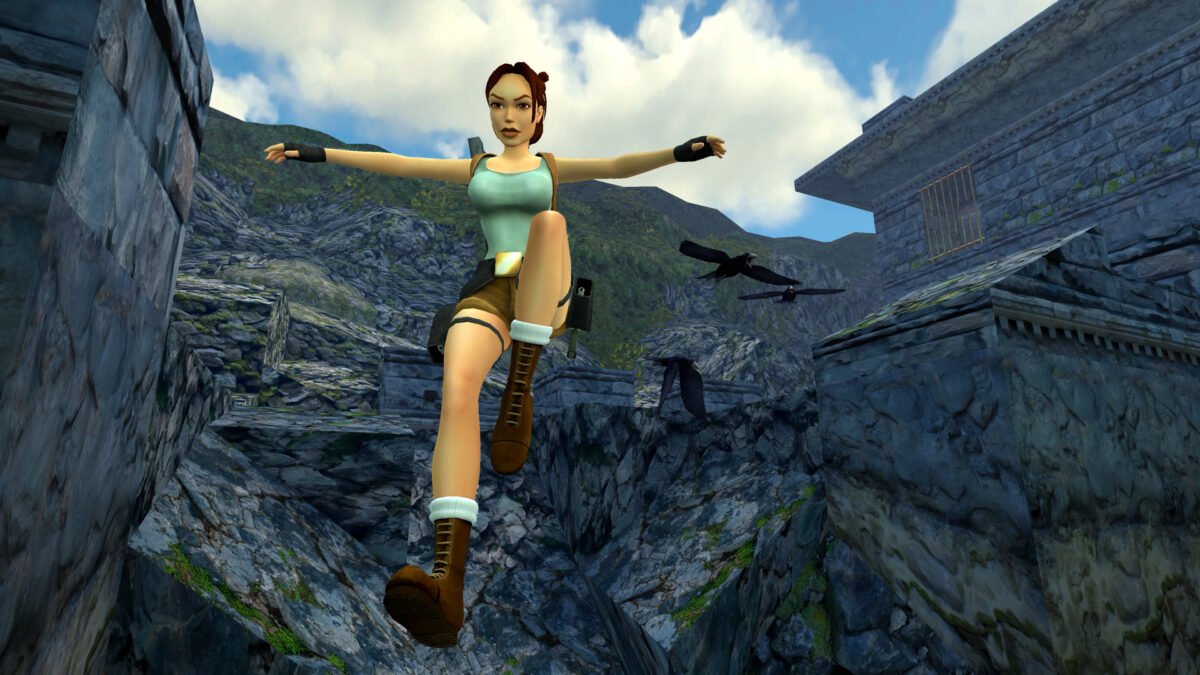As we await Lara Croft’s next new outing, Aspyr is taking players on an archaeology field trip with Tomb Raider I-III Remastered, revisiting the trio of PS1 games that made her one of the biggest names in gaming.
Around the series’ 25th anniversary back in 2021, the future looked bright for Lara Croft with a trio of new projects: a new Netflix anime featuring the most inspired casting for the character yet, Haley Atwell; a sequel for the good-by-game-movie-standards 2018 film starring Alicia Vikander; and a bold new game that would unify the “classic” and “survivor” iterations of the character.
That bubble seemed to burst as the film’s development languished, and developer Crystal Dynamics traded hands from Square Enix to Embracer Group, who then struck a deal with Amazon Games to work on the new game “from the ground up,” and started laying off employees from its studios wholesale. (Thankfully, that anime still seems to be on the way, despite near radio silence from Netflix.)
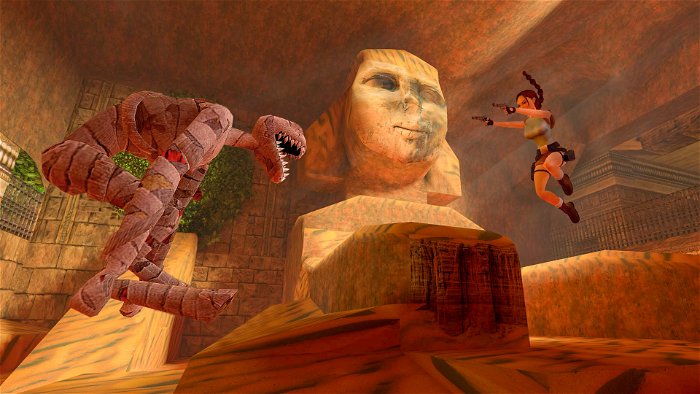
Fans have had to make do with an adequate mobile game and an inevitable crossover with Fortnite over the last few years since Shadow of the Tomb Raider, so I took the announcement of Tomb Raider I-III Remastered as a net positive sign. Unfortunately, it doesn’t quite live up to the standards of other recent remasters and retro revivals.
As the name suggests, Tomb Raider I-III Remastered bundles the late-90s classics with a facelift. Rather than simply repackage the original versions with minimal control updates, like Konami’s recent Metal Gear Solid: Master Collection Volume 1, or completely overhauling the things that were broken, like BioWare’s exemplary Mass Effect Legendary Edition, Aspyr took a middle route: using the original source code, and applying a modern coat of paint.
The effects can be seen in-game at practically any time. By pressing the Options/Start button, the visuals toggle between the original and remastered approaches, even in the pause menu. The difference is practically night and day: characters have actual faces capable of expressions, in-world items become 3D models instead of flat sprites, and lighting effects make a world of difference in every department.
Tomb Raider I-III Remastered‘s modern controls don’t quite go far enough to alleviate the originals’ clunky platforming.
Supplementing this visual touchup is a new set of modern controls. The original “Tank Controls” are preserved for those who wish to go old-school, but the new set is much more natural by comparison.
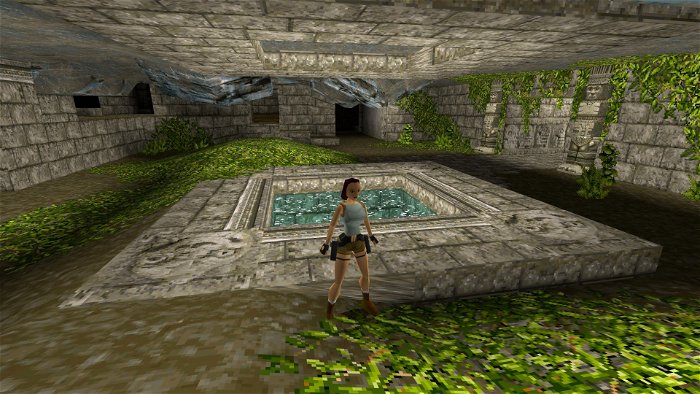
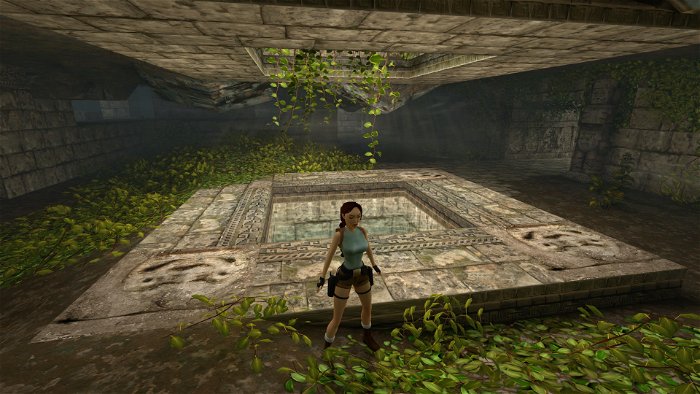
So far, so good, right? Modern controls and graphics and the original feel of the games preserved—what more can we ask of a remaster?
Tomb Raider I-III Remastered‘s “coat of paint” approach sounds great on paper but starts to wear thin in practice. The sad truth is these games have not aged very well in many regards. In 1996, the original Tomb Raider was a huge hit that pushed the technical and creative envelopes of the industry, but a lot has happened in 28 years. Not all games that break a technological standard can remain relevant for years to come, like Super Mario 64.
In most departments, Lara’s original trilogy has lost a lot of its lustre. The writing doesn’t have the comparatively timeless tone of Metal Gear Solid, instead relying on corny, cliché dialog and even outdated cultural clichés (such that the game features a disclaimer upfront about its insensitive depictions of certain elements). There isn’t a lot of story, per se, and what’s here is pure shallow, popcorn entertainment—though you can tell the original devs really wanted to give it a cinematic feel.
The level design is very typical for mid-90s adventures, with long, maze-like corridors and arbitrary locks. Complicating it all in 2024 is the fact that Tomb Raider I-III Remastered‘s modern controls don’t quite go far enough to alleviate the originals’ clunky platforming. Swimming has been improved, but overall, jumping and grasping far platforms is still an utter leap of faith, and crawling remains overcomplicated—especially a pain when trying to dodge lasers in an air duct. You can take the tank out of the control scheme, but apparently, you can’t quite remove it from the physics.
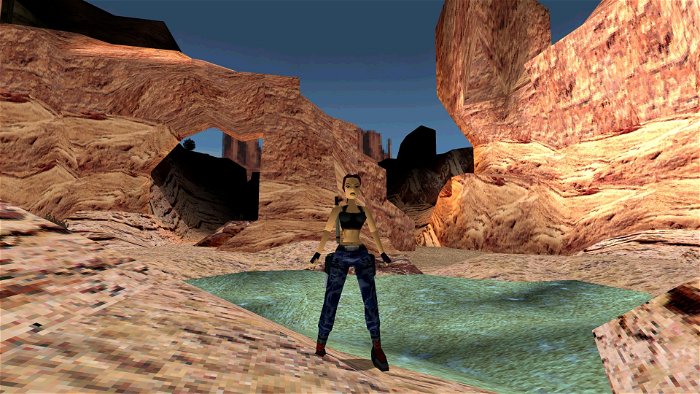
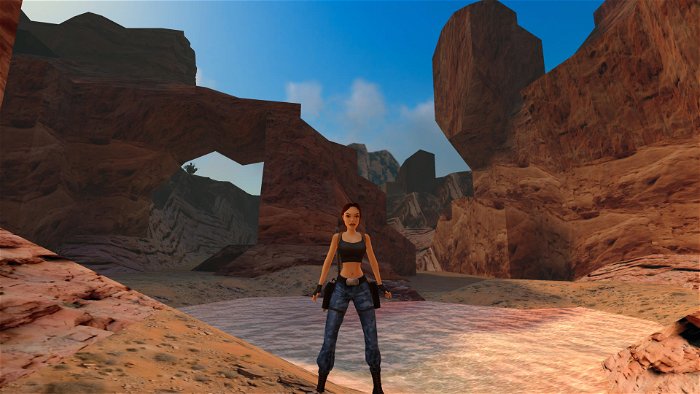
Likewise, the graphical updates in Tomb Raider I-III Remastered are a mixed bag. Certain instances, like the Nevada desert above, look fantastic. There are actual skylines, not just gradients; the ivy that grows over the Croft Manor’s walls looks like ivy and not some kind of alien mold; and objects like control panels, electronic doors, and recreations of real-world art actually have discernible, textured details. The night sky over the London rooftops in Tomb Raider III has legitimate clouds with moonlight breaking through, instead of the hyper-pixelated suggestion of a skyline.
However, covering existing skeletons with new textures can have the opposite effect on occasion, undercutting the modernization. Tomb Raider I-III Remastered‘s landscapes—the cliffs, rock walls, hillsides, rooftops, and other surfaces that make up the playable environments—look a little bizarre with modern textures stretched over them. They jut out at sharp angles where, instead, they should curve or level off more naturally. Current-gen textures and lighting can’t hide the fact that Lara’s running over some ancient, early-PlayStation-era structures.
This effect extends to Tomb Raider I-III Remastered‘s character models. Lara’s new model looks great, right down to each of her various wardrobe changes. Yet, she still moves like the angular wireframe version—a side effect of relying on the original source code to power the game, and the novelty of toggling between graphics on the fly. Other NPCs are just as janky in their movements, which does not pair nicely with the “you were almost a Jill Sandwich” level of dialogue and stage directions.
The frustrating cherry on top is the camera. Tomb Raider I-III Remastered does little to address this ancient bugbear, and any close-quarter interior environment can be a pain to navigate as you struggle against both Lara’s still-too-tanks movements and the lack of visibility, hoping you don’t fall into a pit before you can see where she’s walking again.
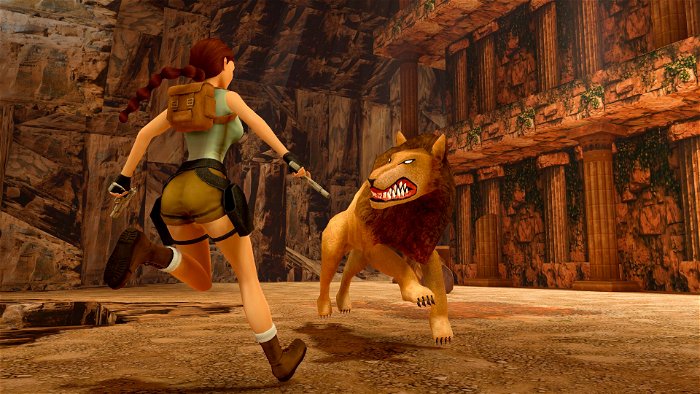
There’s no perfect remaster formula that can be applied to every old game universally, but generally speaking, it’s a good idea to fix what was originally broken (or what has broken since) while you’re at it. It’s possible to respect the original vision while still making it palatable for modern audiences. Mass Effect Legendary Edition did this when it made sniper rifle mechanics actually work, as did the Final Fantasy Pixel Remasters, which maintained the original 8- and 16-bit visual ratios while also making them fit modern widescreen displays.
Instead, Tomb Raider I-III Remastered seems to aspire to a little higher than the Grand Theft Auto: The Trilogy’s level of attention—not exactly that broken, but not very aspirational either. It’s quite possible this is the result of some executive decision, but if Aspyr was going to go to the lengths of remodelling Lara with such care and building a new control scheme, they should’ve gone the full distance.
All of that being said, there’s still some retro joy to be had for longtime Lara fans or others who played the PS1 in its time. Tomb Raider I-III Remastered is, at least, modestly priced for what you get: three games and their individual expansions for $30 USD. Those who experienced these games on the PS1 may never have played those expansions, as they were only released at the time on PC/Mac. A lot of loving attention went into the trophy lists, at least, with a whopping 80-90 per title ranging from standard level completion checkpoints to obscure, level- or boss-specific challenges (and locking your long-suffering butler in the meat locker).

Though I would gladly have paid more for a more full-fledged remaster, I always appreciate seeing a piece of gaming history made available for today’s platforms. They may have aged with less grace than several of their contemporaries, and I suspect younger audiences will be harder-pressed to see the appeal, but if you’re like me, you may still enjoy being whisked back to that era for a spell, reliving memories of consulting PlayStation Magazine’s walkthroughs and cheat code lists.
(And yes, to Tomb Raider I-III Remastered‘s credit, cheat codes—the ones that actually existed, that is—still work.)
